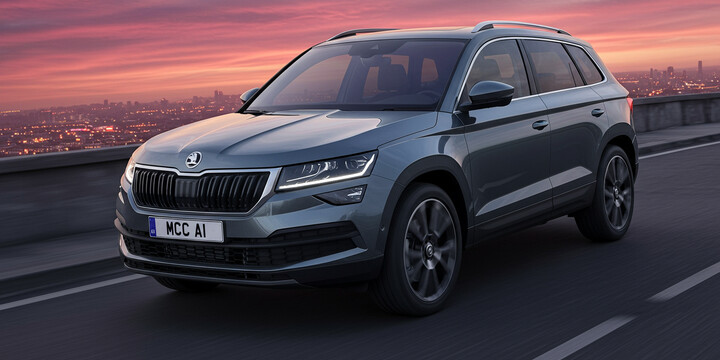
SKODA KAROQ (2022-) 5DR SUV 2.0 TDI 150 DPFR SS EU6 SE L 6SPD
The SKODA KAROQ (2022-) 5DR SUV 2.0 TDI 150 DPFR SS EU6 SE L 6SPD is a versatile and practical compact SUV that stands out in the UK market. Designed with families and active commuters in mind, this vehicle offers a comfortable ride, generous interior space, and a stylish exterior. Its 2.0 TDI diesel engine combines efficiency with reliable performance, making it an ideal choice for those looking for a balanced mix of power and economy. The SUV’s reputation for durability and low running costs makes it a popular option among used car buyers, especially considering the average valuation of around £25,871 and an average mileage of just under 13,000 miles.
What sets the SKODA KAROQ apart is its thoughtful design, user-friendly features, and impressive fuel economy within its class. It’s often praised for its comfortable driving experience and practicality, making it suitable for daily commuting, family trips, or weekend adventures. When compared to rivals, the SKODA KAROQ (2022-) 5DR SUV is known for offering good value, reliability, and a refined driving experience—factors that make it an attractive choice for first-time buyers and seasoned drivers alike. Whether you’re looking for a stylish, efficient, and dependable used SUV or exploring something versatile for city and countryside driving, the SKODA KAROQ is worth considering.

average use

The data indicates that the majority of recently recorded mileage readings for the SKODA KAROQ (2022-) 5DR SUV 2.0 TDI 150 DPFR SS EU6 SE L 6SPD are quite low. Specifically, 91.7% of vehicles have recorded mileage between 0 and 10,000 miles, while only 8.3% have mileage between 20,000 and 30,000 miles. This suggests that most vehicles in the sample are relatively new or have not been driven extensively since purchase.

vehicle values

The data indicates that the majority of private sale valuations for this Skoda Karoq (2022-) model fall within the £24,000 to £25,000 range, accounting for 33.3% of the valuations. There is a relatively even distribution across several price brackets, with notable percentages also in the £21,000 to £22,000 (16.7%) and £28,000 to £29,000 (16.7%) ranges. Smaller proportions are seen in the £23,000 to £24,000, £25,000 to £26,000, £30,000 to £31,000, and £31,000 to £32,000 brackets, each at 8.3%. Overall, the data suggests a concentration of private sale values around the mid-£24,000s, with some vehicles expected to be valued lower or higher, indicating a fairly broad market spread for this model.

production years

The data indicates that among the SKODA KAROQ models from 2022 onward, a majority—58.3%—were manufactured in 2023, while 41.7% were produced in 2022. This suggests a recent increase in production volume for this vehicle model, with most of the available vehicles being newer models manufactured in 2023.

colour popularity

The data on the main paint colours for the Skoda Karoq (2022-) reveals that grey is the most common choice, accounting for 41.7% of vehicles. Blue is also quite popular at 25%, while white represents 16.7%. Less frequently chosen are orange and black, each making up 8.3%. Notably, grey and blue together constitute over two-thirds of the vehicle colours, indicating a preference for neutral and blue shades within this model range.

ownership cycle

The data indicates that the majority of 'SKODA KAROQ (2022-) 5DR SUV 2.0 TDI 150 DPFR SS EU6 SE L 6SPD' vehicles have been registered with a single keeper, accounting for 75% of the sample. A smaller proportion, 16.7%, have had three registered keepers, and only 8.3% have had two. This suggests that most owners tend to retain the vehicle for some time before changing keepers, with only a small fraction experiencing multiple ownership changes.

engine choices

The data indicates that all SKODA KAROQ (2022-) 5DR SUV 2.0 TDI 150 DPFR SS EU6 SE L 6SPD vehicles analyzed are equipped with a 1,968 cc engine, confirming uniformity in engine capacity across the sample. Additionally, the entire fleet exclusively uses diesel fuel. This suggests a consistent engine size and fuel type for this model in the market, which could be useful for assessing compatibility, running costs, or emissions characteristics.












